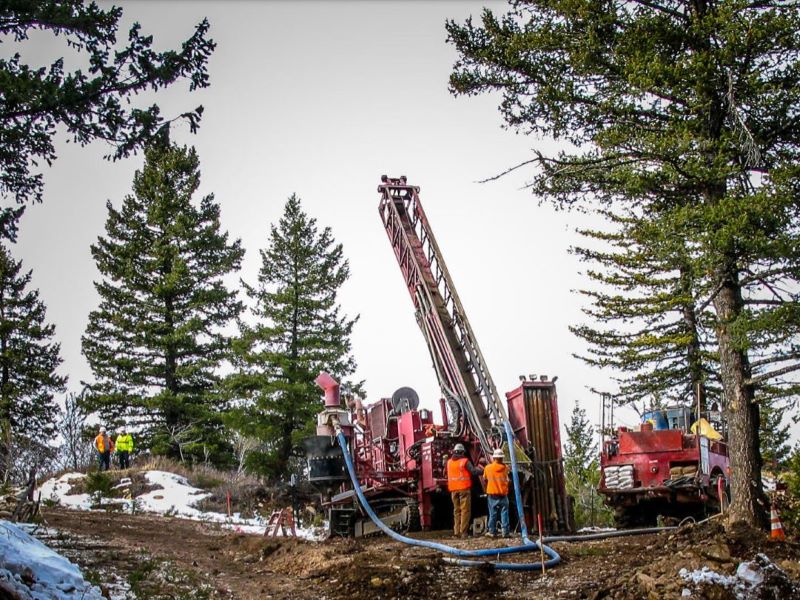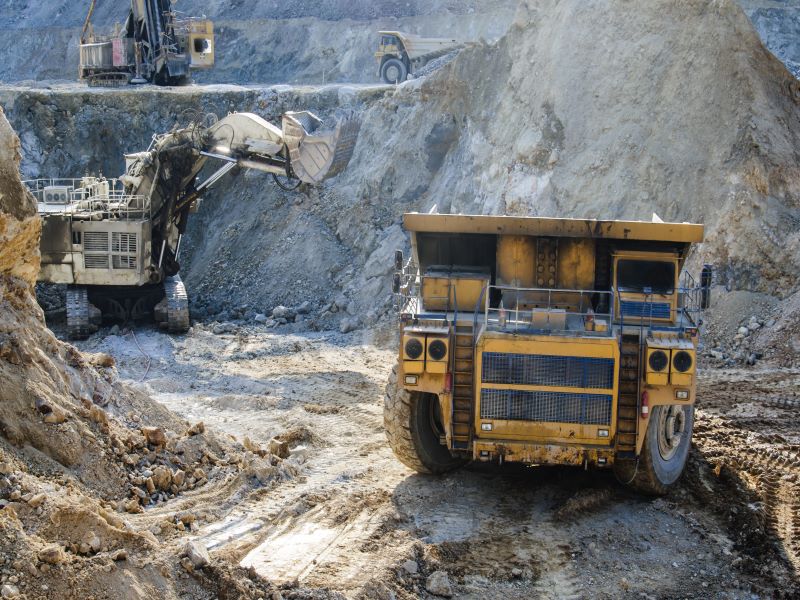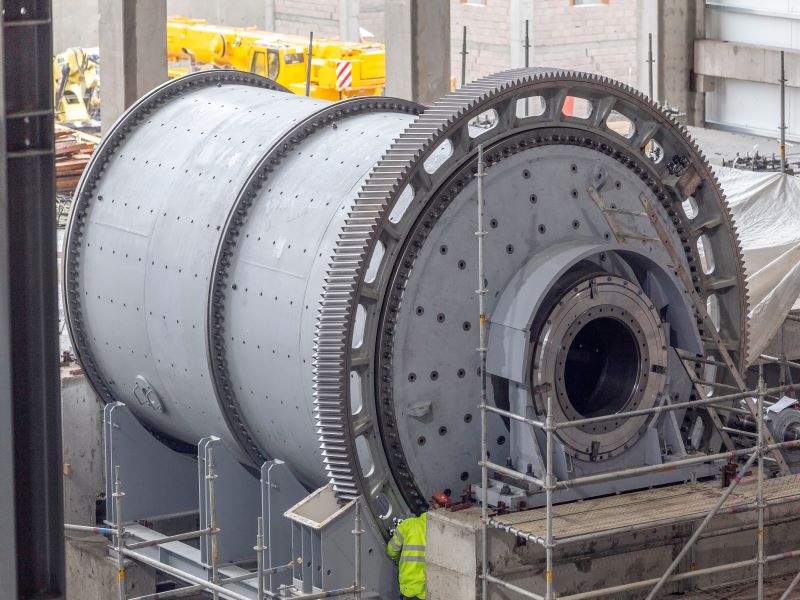The DeLamar gold-silver project is an open-pit mine being developed in southwestern Idaho, US, by Integra Resources, a Canada-based mineral exploration company.
Integra Resources acquired the project from Kinross DeLamar Mining, a wholly owned subsidiary of Kinross Gold, in November 2017.
A pre-feasibility study (PFS) for the project was completed in January 2022, which highlighted a two-stage development involving heap leaching and milling of ore. The company will plan for stage two development in the first year of stage one.
The gold-silver project is estimated to have a life of mine (LOM) of 16 years. It is estimated to require a pre-production investment of $282m for the combined heap leach and milling development.
Integra will continue drilling programmes at the project and conduct additional hydrological and geochemical waste rock studies, as well as reclamation closure planning.
DeLamar project location and geology
The DeLamar project is located approximately 160km away from Boise, the capital city of Idaho. It includes the historic DeLamar Mine that ceased operations in 1998 due to low prices of precious metals.
The property encompasses an area of 2,144ha of patented and unpatented claims, as well as another 1,659ha of leased lands.
The DeLamar project is situated in the Owyhee Mountains, which comprise a major mid-Miocene eruptive centre. The area comprises an eroded surface of Late Cretaceous granitic rocks and hosts basalt flows and younger, rhyolite flows, domes, and tuffs of the mid-Miocene era.
DeLamar mineralisation and reserves
Two types of gold-silver mineralisation occur in the area. One type is present within relatively continuous, quartz-filled fissure veins while the other is found within broader, closely spaced quartz veinlets and quartz-cemented hydrothermal breccia veinlets.
The project area primarily hosts silver-gold bearing minerals such as aguilarite, naumannite, argentite, native gold and electrum, ruby silver, native silver, cerargyrite, and acanthite. It also features variable amounts of pyrite and marcasite, while small amounts of chalcopyrite, galena, and sphalerite occur in some veins.
The proven and probable mineral reserves of the DeLamar project were estimated at 123.4 million tonnes (Mt), grading 0.45g/t of gold and 23.27g/t of silver, as of January 2022.
Mining at DeLamar Project
The DeLamar project comprises the DeLamar and Florida Mountain deposits. It is envisaged to be operated as an open-pit mine using a primary fleet comprising two 23m³ hydraulic shovels, five production drills, 16 136t haul trucks, and ancillary support equipment. The mine will be operated with a waste-to-ore strip ratio of 2.21.
Most of the ore haulage from the pit to the processing facility will be implemented through a Railveyor, a remote-controlled light-rail haulage system to be installed to reduce the project’s environmental footprint. The light-rail train cars will be propelled by stationary drive stations.
The mine plan proposes an on-site treatment of oxide and mixed ores through a heap leach facility operating at 35,000 metric tonnes per day (mtpd) under stage one development.
The heap leach operation is estimated to have an average annual production rate of 136,000oz of gold equivalent over seven years.
Stage two development will involve the treatment of a portion of the non-oxide mineralisation through a 6,000mtpd mill, which will comprise conventional grinding, flotation, re-grinding, and cyanidation.
Heap leaching of Florida Mountain ore is expected to commence in the first year. Construction of the milling circuit is expected to start in year one, while production is estimated to start in year three.
Mining of oxide and mixed ore from the DeLemar deposit is expected to commence in year two. The non-oxide ore from the DeLamar and Florida Mountain deposits will be accessed from year three.
Ore processing at DeLemar Project
The DeLemar project will produce approximately 1.15 million ounces (Moz) of gold and 49.9Moz of silver over its LOM.
The run-of-mine (ROM) ore will pass through a primary gyratory crusher, a secondary crusher in open circuit, and two closed-circuit tertiary cone crushers. The primary crusher will be able to handle both heap leach and mill throughputs.
In the milling process, a semi-autogenous grinding (SAG) mill with pebble recycle will be fed by the crushed ore from the non-oxide coarse ore stockpile. The screen undersize from the SAG mill will be sent to a ball mill arranged in closed-circuit with cyclones.
The IsaMill, a horizontal fine-grinding mill that provides high efficiency and availability, will be used to regrind the concentrate.
The concentrate will undergo leaching and the leached slurry will be separated to produce a pregnant solution, which will be sent to the Heap Leach Merrill-Crowe circuit for the recovery of gold and silver.
The heap leach and milling operations will be supported by an on-site laboratory.
Infrastructure of the gold-silver project
An on-site hybrid microgrid comprising different energy sources, including solar, battery, and liquefied natural gas (LNG) generators is proposed to meet the power requirements of the project.
A solar array is planned to be constructed on the historic tailing impoundment to provide 12MW of electricity.
A 13MW LNG power plant will be built to meet the increased energy demand of 25MW during higher production years. A battery storage facility will act as a secondary source to address demand fluctuations or a fall in solar production.
Contractors involved
Mine Development Associates, a division of RESPEC, was appointed as the lead engineering firm for the PFS in December 2020.
M3 Engineering and Technology, a design and construction services firm, was engaged to provide the design for process facilities, access, and power infrastructure.
The tailings management facility and the heap leach pad were designed by Welsh Hagen Associates, an engineering and consulting firm based in the US, while all metallurgical test works were conducted by McClelland Laboratories.
Local company Warm Springs Consulting was engaged to conduct studies related to the integration of sustainable and regenerative systems into the PFS.
Other consultants that supported the PFS were EM Strategies and Elbow Creek Engineering.
Consulting and engineering services company Tetra Tech was contracted to serve as the lead consultant for surface water sampling and analysis, as well as hydrogeological studies.
SRK Consulting (US) was responsible for baseline geochemical studies for the DeLamar project.
Environment and health experts from Danish company Ramboll oversaw the collection of meteorological data at the DeLamar site.






